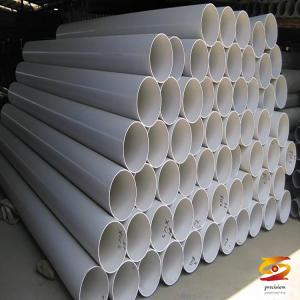What materials are PE pipes made of?
If you want to know more about it please do not hesitate to
contact me. WhatsApp:+86-15966835076.
High-performance rotomolding applications utilize the unique properties of their chemically crosslinkable grades. These grades have good fluidity in the first stage of the molding cycle and are then cross-linked to form their excellent resistance to environmental stress cracking and toughness. Wear resistance and weather resistance. Cross-linkable PE is only suitable for large containers ranging from 500-gal tanks for transporting various chemicals to 20,000-gal agricultural tanks.
▲ Film: PE film processing generally uses ordinary blown film processing or flat extrusion processing. Most PEs are used for films, and general purpose low density PE (LDPE) or linear low density PE (LLDPE) are available. HDPE film grades are generally used where superior stretchability and excellent impermeability are required. For example, HDPE film is commonly used in commodity bags, grocery bags and food packaging.
【Product Performance】
High-density polyethylene is non-toxic, odorless, odorless white particles, melting point is about 130 ℃, relative density is 0.941 ~ 0.960. It has good heat resistance and cold resistance, good chemical stability, high rigidity and toughness, and good mechanical strength. Dielectric properties and resistance to environmental stress cracking are also good.
【Packing, storage and transportation】
Keep away from fire and heat insulation during storage. Keep dry and tidy in the warehouse. It is strictly prohibited to mix in any impurities. Sun and rain are strictly prohibited. Transportation should be stored in a clean, dry covered car or ship cabin, without sharp objects such as nails. Mixed transportation with flammable aromatic hydrocarbons, halogenated hydrocarbons and other organic solvents is strictly prohibited.
【recycle and re-use】
HDPE is the fastest growing part of the plastic recycling market. This is mainly due to its ease of reprocessing, minimal degradation characteristics and its numerous applications in packaging. The main recycling is to use 25% of the recycled materials, such as post-consumer recycling (PCR), and pure HDPE after reprocessing to make bottles that are not in contact with food.









